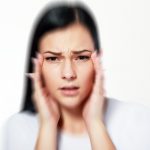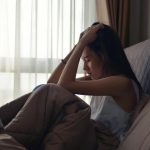Postural orthostatic tachycardia syndrome, more commonly referred to as POTS, is a condition that you will sometimes find in patients with post-concussion syndrome (PCS).
POTS is a dysfunction of the autonomic nervous system, which causes the heart to race when you are sitting or standing. This condition often occurs after physical trauma.
POTS patients will usually experience symptoms of dizziness, headaches, light-headedness, or sometimes nausea. Patients may even feel their hearts racing when they sit up or stand. Some patients may also experience chest pains — and these symptoms often worsen after exercise or other forms of exertion.
Watch the seventh video in our Post Concussion Syndrome series to learn more about POTS, its causes, and how we treat it at Northoak Chiropractic:
If you have any questions about POTS after reading this article, please send us a message.
What is Postural Orthostatic Tachycardia Syndrome (POTS)?
POTS is a dysfunction of the autonomic nervous system, also known as a dysautonomia, which causes the heart to race when you are in an upright position. If you have POTS, your heart will beat so fast that it won’t have time to completely refill between beats, so the amount of blood that it pumps out will not be enough to meet the demands of your brain and body.
Common Symptoms
Have you ever gotten dizzy or light-headed when you’ve stood up too fast?
When we experience this sensation, it is typically not a neurological problem — it’s usually caused by dehydration or deconditioning from a lack of exercise — but it provides a great example of what it feels like when your brain is not getting the blood and oxygen that it needs. These are similar to the type of symptoms that you might experience if you had POTS.
Orthostatic Intolerance
You may have heard POTS referred to as a type of orthostatic intolerance, which means it is an impaired reaction of the autonomic nervous system in response to a change in position of the body.
The autonomic system is what regulates the automatic process of our body: digestion, heart rate, blood pressure, sleep, temperature control, and blood flow. It is made up of the parasympathetic system and the sympathetic system. These two systems work hand-in-hand to keep the body balanced and functioning properly.
Heart Rate and Blood Pressure
When a person has POTS, their standing heart rate will be more than 30 beats per minute higher than their heart rate when they are supine or lying down. It is normal for our heart rate and our blood pressure to be lowest when we’re lying down. When we sit up or stand, our heart has to work harder to pump blood against gravity, so both our heart rate and blood pressure need to increase to accomplish this.
The sympathetic system is responsible for increasing the heart rate and constricting the blood vessels to maintain the flow of blood to the brain when we stand up. In a normal, healthy person, the activity of the parasympathetic system keeps the sympathetic system in check, so the heart rate and blood pressure don’t go too high.
In POTS, we have a breakdown between the two systems, which causes the heart rate to rise too high. This underlying breakdown is why the condition is referred to as an autonomic dysfunction, since the system is not functioning properly. It is important to note that, in order to be diagnosed with POTS, you must have both the elevated heart rate and the disabling symptoms.
What Causes POTS?
As we mentioned above, POTS often starts after experiencing a physical trauma, like a concussion. However, it can also appear following a pregnancy, a surgery, or even a viral illness.
In most cases that we have treated at Northoak Chiropractic, POTS is experienced due to a concussion, but we’ve also seen it associated with dental procedures and even plastic surgery.
Who is likely to suffer from POTS?
POTS is more common in women than men. It is most common between the ages of 15 and 50. However, men, women, and children of all ages can suffer from the condition.
What other symptoms will you see in a patient with POTS?
If someone is suffering from POTS, it is generally because the sympathetic system is too active. If a PCS patient has POTS, they will often be presenting other effects of too much sympathetic activity, including:
| Sympathetic System Effect | Potential Symptoms |
| Increased heart rate and blood pressure | Racing heart and lightheadedness. |
| Constriction of superficial blood vessels | Cold, sweaty hands and/or feet |
| Secretion of chemicals by adrenal glands | Anxiety and insomnia |
| Pupil dilation and increased hearing acuity | Light and sound sensitivity |
What area of the brain is damaged in POTS patients?
In PCS patients suffering from POTS, there may be damage to areas of the brain that would normally inhibit the sympathetic system. This damage may affect the cortex, the pontomedullary brainstem where the parasympathetic centres are located, or sometimes the cerebellum.
However, there are exceptions to these common cases. Any lesion affecting excitatory inputs to the parasympathetic system or inhibitory inputs to the sympathetic system could potentially cause a dominance of the sympathetic system. This would lead to a situation where the sympathetic system is more active, like we see in some cases of POTS.
POTS Treatment
At Northoak, we treat these types of conditions by driving neuroplasticity in the injured areas of the brain. For POTS, we use a combination of tilt-table positioning and brain stimulations to increase parasympathetic inhibition of the sympathetic activity.
For most patients, our treatments will be able to improve autonomic regulation when you are sitting or standing. This will help resolve POTS symptoms that you may be experiencing.
If you are looking for treatment for POTS or your PCS symptoms in general, contact us online or call us at 905-338-5951 to set up a consultation with Dr. Burness.


